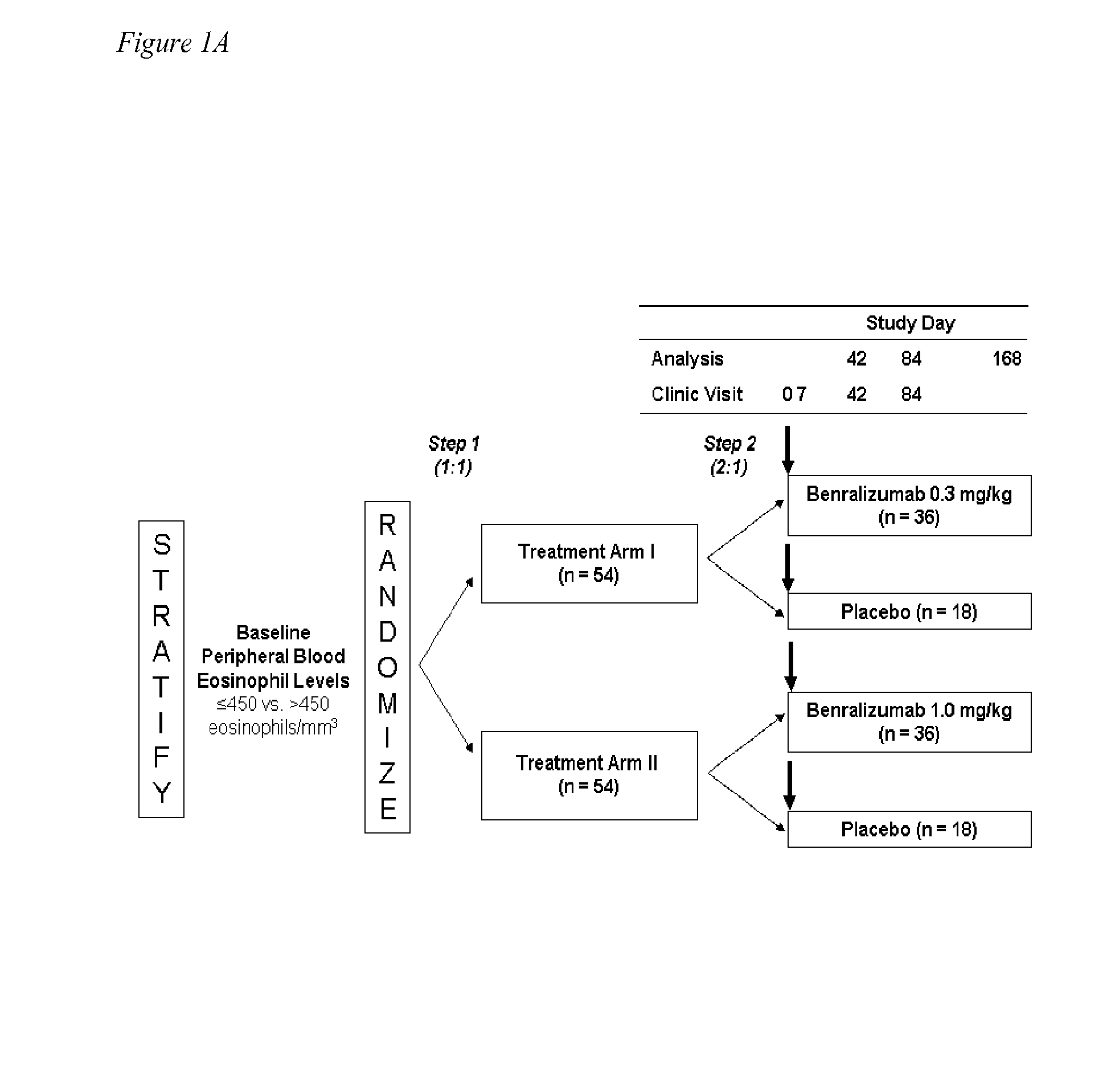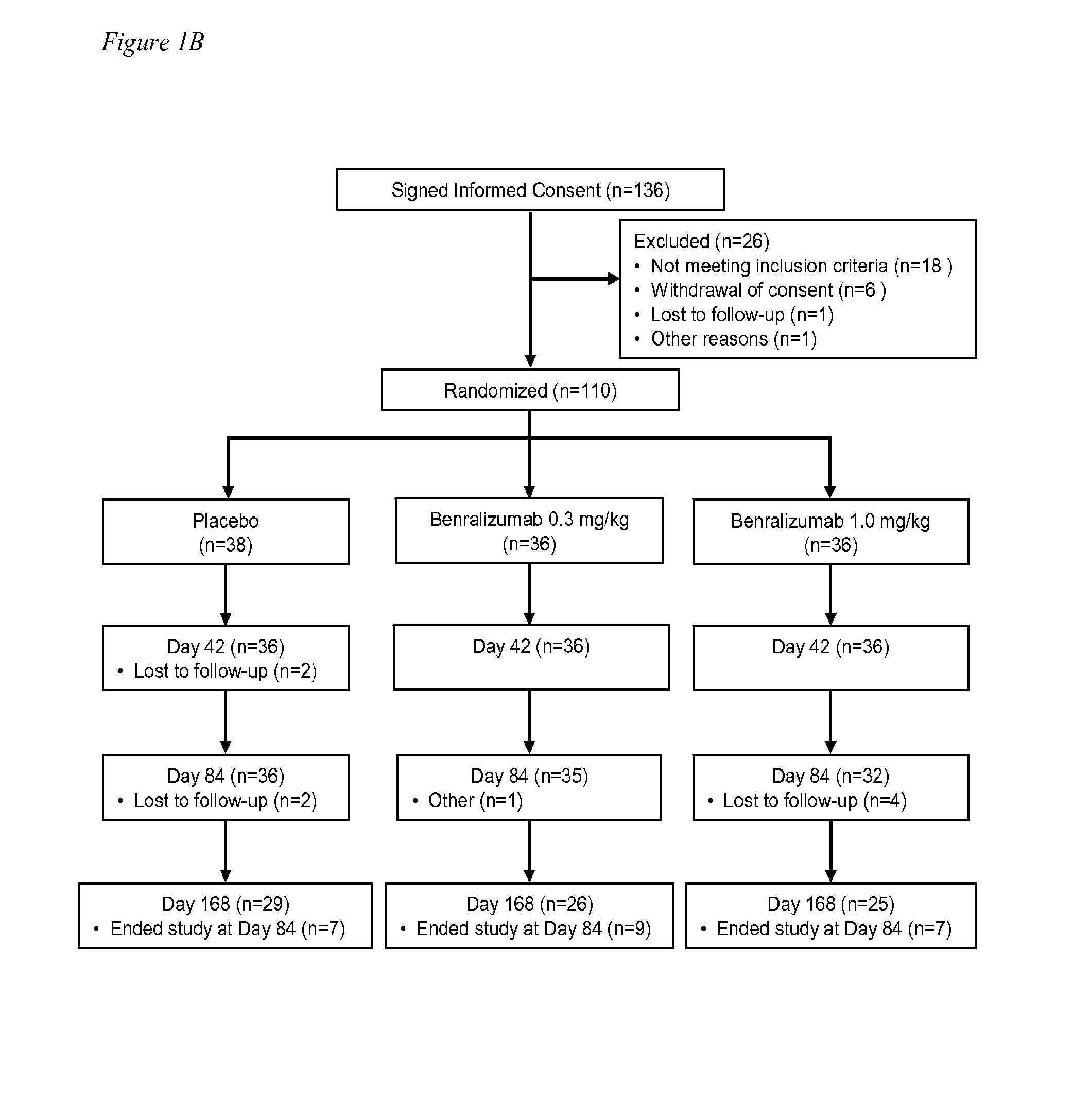Methods For Reducing The Frequency And Severity Of Acute Exacerbations Of Asthma
a technology for asthma and exacerbations, applied in the field of asthma frequency and severity reduction, can solve problems such as refractory exacerbations, and achieve the effects of reducing the number of acute exacerbations, and reducing the number of exacerbations
- Summary
- Abstract
- Description
- Claims
- Application Information
AI Technical Summary
Benefits of technology
Problems solved by technology
Method used
Image
Examples
example 1
Patients and Methods
(a) Subjects
[0050]Subjects in this study were 18 to 60 years of age with a physician diagnosis of asthma for a minimum of 2 years duration and met National Heart Lung and Blood Institute (NHLBI) guidelines for persistent asthma in the previous 3 months. Subjects were recruited from patients who were evaluated in the emergency department (“ED”) for an asthma exacerbation that had been ongoing for a minimum of 2 hours at presentation. Eligible patients must have received at least 2 treatments with inhaled bronchodilators either in the ED or in the emergency medical system (EMS) with an incomplete clinical response which was defined as a forced expiratory volume in one second (FEV1) or peak expiratory flow (PEF) of not more than 70% predicted value. In addition, these patients must also have experienced at least one other asthma exacerbation requiring an urgent care visit in the past 12 months. Subjects were allowed to be active tobacco smokers with a total exposure...
example 2
Results
(a) Enrollment and Baseline Characteristics
[0064]One hundred thirty-six (136) subjects with acute asthma exacerbations were screened and 110 were enrolled in the study. Two subjects in the placebo group were lost to follow up after dosing, and were not included in the evaluable population. One hundred and eight (108) subjects completed evaluations through day 42 and were considered evaluable (36 subjects / group) at the primary endpoint of 84 days (FIG. 1B). Overall, 80 (73%) of the 110 randomized subjects were followed for the entire 24 weeks. The demographics and baseline asthma characteristics of the study population are shown in Table 1. The three cohorts were comparable in respect to asthma history and asthma control at entry into the study. The majority of subjects in this study were obese with BMI>30. Asthma Control Questionnaire (ACQ) scores were high and Asthma Quality of Life Questionnaire (AQLQ) scores were low but not unexpected for patients upon presentation to the...
PUM
| Property | Measurement | Unit |
|---|---|---|
| time | aaaaa | aaaaa |
| time | aaaaa | aaaaa |
| time | aaaaa | aaaaa |
Abstract
Description
Claims
Application Information
 Login to View More
Login to View More - R&D
- Intellectual Property
- Life Sciences
- Materials
- Tech Scout
- Unparalleled Data Quality
- Higher Quality Content
- 60% Fewer Hallucinations
Browse by: Latest US Patents, China's latest patents, Technical Efficacy Thesaurus, Application Domain, Technology Topic, Popular Technical Reports.
© 2025 PatSnap. All rights reserved.Legal|Privacy policy|Modern Slavery Act Transparency Statement|Sitemap|About US| Contact US: help@patsnap.com



